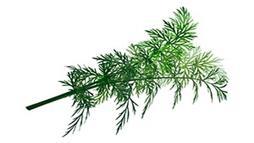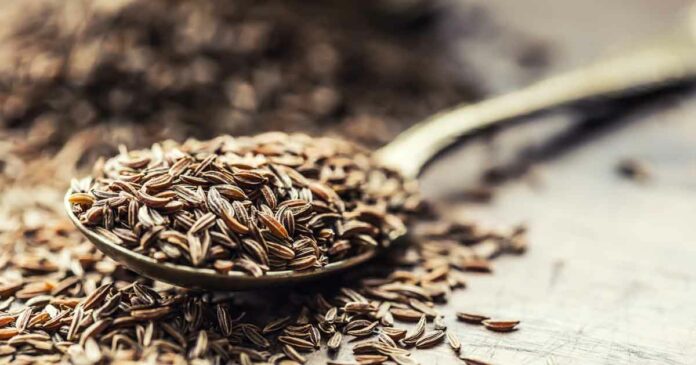Caraway: A Plant With Diverse Culinary Applications, Plus a Few Potential Health Benefits

Story at-a-glance
- Adding caraway into your regular diet may be beneficial to your health, as it contains a wide variety of nutrients that can support optimal health
- Caraway is featured greatly in dishes and home remedies around the world due to its medicinal and culinary applications. Discover what makes caraway a strong contender among other well-known herbs
Caraway (Carum carvi) is an aromatic plant known for its seeds. However, other parts of it are edible as well, such as the leaves and roots.1 It’s considered to be one of the oldest cultivated spices,2 being utilized by ancient Egyptians, Greeks, Romans and Arabs.3 In fact, it is believed that the word originated from the Arabs, who called the seeds “karawya.”4
Today, caraway is still featured greatly in dishes and home remedies around the world due to its medicinal and culinary applications. Discover what makes caraway a strong contender among other well-known herbs.
5 Potential Health Benefits of Caraway
Adding caraway into your regular diet may be beneficial to your health, as it contains a wide variety of nutrients that can support optimal health. It may be beneficial for:5,6
- Promoting digestive health — A 100-gram serving of caraway seeds provides 38 grams of fiber,7 a dietary component that can help maintain proper digestive health by promoting regularity, which may help reduce your risk of stomach and intestinal diseases.
- Fighting microbes — Caraway essential oil has antibacterial properties, and has been found to help inhibit harmful organisms like salmonella.8
- Boosting bone health — Caraway seeds contain a healthy dose of zinc, a mineral that may help increase bone density.9
- Managing inflammation — According to Organic Facts, taking caraway oil with raw honey or warm water may help loosen up mucus in the respiratory system as well as control the inflammation in the airways.10
- Improving sleep quality — Magnesium, a mineral found in caraway seeds, may help enhance the duration, quality and tranquility of sleep,11 leaving you feeling better for the next day.
The Applications of Caraway Are Mainly Culinary
Ever since its discovery, caraway has been extensively used in cooking. European cuisine frequently employs it to flavor duck, goose and pork dishes. In North Africa, it’s a core ingredient in harissa, a powder made of various spices.12 In the Middle East, caraway features prominently in tabil, another spice mix with historical origins from Tunisian Arabia.13,14
Caraway seeds, on the other hand, have diverse applications. They’re largely used in rye products, and can be added to:15
- Cabbage dishes
- Potatoes and other vegetable recipes
- Egg recipes such as omelet and quiche
- Seasoning for soups and broths
- Cheese spreads and other dips
- Spice blends
- Flavoring for roasted meats
- Baked goods
Growing Caraway in Your Own Home
Planting and caring for caraway isn’t an arduous task, but there are some things you need to consider before setting up your garden. First, it must be planted in well-drained soil with a pH level of 6 to 7. Your garden must also have full sun exposure for best harvest quality, but the plant may tolerate partial shade as well.16
The best time to plant seeds is in spring or early autumn, and should be directly planted on the ground instead of pots because seedlings do not transplant well. Sow the seeds a half-inch deep into the soil and once they become seedlings, separate them 6 to 8 inches apart. Water the ground until seedlings appear, and do not let them dry out. Once the plant matures, they can be dried before the next watering session.
Leaves can be harvested from spring onward for culinary purposes. Use them immediately if you want to add them to fresh salads. Dried, however, they can be used for flavoring and can last for a year.
Caraway seeds, on the other hand, can be harvested once they appear and develop a deep brown color. To do this, carefully cut the seed heads then hang them upside down to dry. Storing them in an airtight container can extend the shelf life for months.
Cooking With Caraway: Buttered Cabbage With Caraway Seeds Recipe
Caraway can add an interesting layer of flavor to dishes. If you haven’t tried it yet, this dish from Simply Recipes can get your tongue accustomed to the flavor. It makes for a great appetizer or a side meal while being delicious and nutritious at the same time:
Ingredients:
• 2-pound head green cabbage
• 4 tablespoons raw grass fed butter
• 1 teaspoon caraway seeds
• 1/2 teaspoon celery seeds
• Pinch of fresh Himalayan salt
• 1/2 teaspoon freshly ground black pepper
Procedure:
1. Boil water in a large pot and apply a dash of salt to it. In the meantime, prepare the cabbage by peeling it and discarding old or discolored leaves. Cut the head into quarters through the core and discard it, then toss the leaves into the pot.
2. Submerge and boil the leaves in the water for 90 seconds, then drain. Keep the leaves inside the pot.
3. While the cabbage is hot, mix in the butter, salt, pepper, celery and caraway seeds. Adjust the seasoning as needed, according to your taste.
Maximize Caraway Even More by Using Its Essential Oil
Caraway essential oil is a product made from the seeds of the caraway plant through steam distillation. Compared to its spice counterpart, which is mainly used in cooking, caraway essential oil is used to provide aroma to soaps, toothpaste and various cosmetic products.
Another beneficial use of caraway essential oil is in aromatherapy, where it is a prized tool for helping relieve stress and physical and emotional fatigue.21 It may also help ease an upset stomach, as one of its earliest uses is actually for flatulence.22 To use caraway oil, three methods are available:
- Vaporizer — Add a few drops of caraway oil into a diffuser or vaporizer, then inhale the scent to take in the benefits.
- Massage — Mix caraway oil with a safe carrier oil then massage it onto your skin.
- Lotion — You can mix a few drops of caraway oil into a skin lotion to boost its effectiveness to help alleviate skin or scalp problems.
Be careful when using caraway essential oil because it may cause skin irritation. Make sure to dilute it with a carrier oil first before applying topically.
Enjoy Caraway by Finding the Best Method That Suits You
Given that caraway (and its essential oil) has various ways that can be used, there’s no shortage on how you can enjoy it. Just be sure to grow it properly using high-quality soil, and you’ll have a pesticide- and antibiotic-free herb in your kitchen.
Sources and References
- 1 Knoji, “Edible Plants: Caraway; History, Culinary Uses and Nutrition”
- 2 “Essential Oils in Food Preservation, Flavor and Safety,” 2015
- 3 “The Complete Book on Spices & Condiments (with Cultivation, Processing & Uses) 2nd Revised Edition,” 2006
- 4 Botanical.com, “Caraway”
- 5 Healthy Focus, “6 Proven Benefits of Caraway Seeds” January 30, 2017
- 6, 10 Organic Facts, “15 Best Benefits of Caraway Essential Oil”
- 7 USDA National Nutrient Database, Spices, caraway seed
- 8 “Caraway: The Genus Carum,” 2003
- 9 Am J Clin Nutr. 2013 Oct; 98(4): 960–971.
- 11 “The Magnesium Miracle (Second Edition),” 2017
- 12 BBC Good Food, “Harissa”
- 13 “The Magic of Spice Blends: A Guide to the Art, Science, and Lore of Combining Flavors,” 2015
- 14 Vegetarian Times, “Tabil” May 24, 2013
- 15 Professor’s House, “Caraway — One of the Oldest Cultivated Spices in Recorded History”
- 16, 17, 19 Harvest to Table, “How to Grow Caraway”
- 18 The Spruce, “How to Grow and Use Caraway”
- 20 Simply Recipes, “Buttered Cabbage With Caraway”
- 21 “Llewellyn’s Complete Formulary of Magical Oils,” 2012
- 22 “Herbs that Heal: Natural Remedies for Good Health,” 1992

